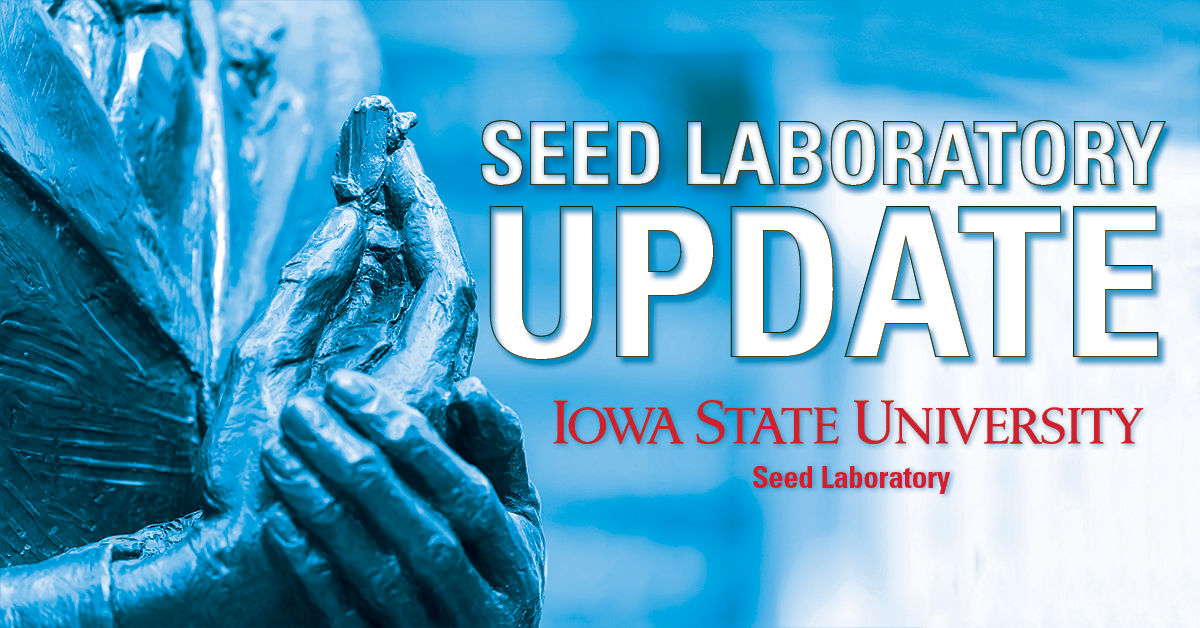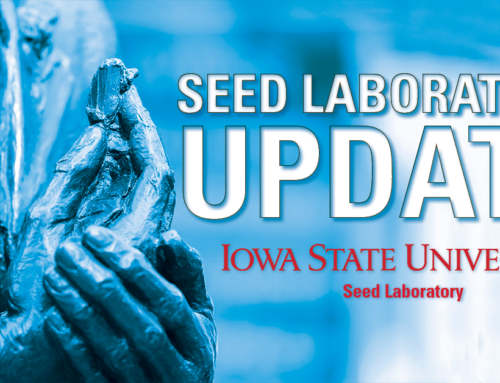As the cover crop season ramps up, the Iowa State University Seed Laboratory is once again receiving a steady stream of samples. Whether you’re submitting samples for germination testing or verifying purity for a federal program, one key piece of information can significantly speed up the testing process: the harvest month and year.
Including this simple detail helps lab staff determine whether a prechilling treatment is necessary to break natural dormancy in seeds. Recently harvested crops—those collected within the last 6–9 months—often need a cold treatment before they will germinate effectively. This is especially true for commonly planted cover crops like oats, rye, other cereals, and grasses.
What is Prechilling and Why Does it Matter?
Prechilling involves placing planted seeds in a cold chamber (typically 5–10°C) for several days before moving them to a warmer environment for germination. This simulates natural seasonal conditions and is critical for accurate testing. When the lab doesn’t know the harvest date, a decision must be made: prechill by default (which adds unnecessary time if the seed doesn’t need it) or contact the sender to ask for more information (which also delays testing). Either way, missing information slows down the process—and that costs time and money.
“We really rely on that harvest date,” says Kim North, seed analyst at the lab. “Without it, we may have to retest or delay the analysis, especially if the seed shows signs of dormancy.”
Submitting Samples: Best Practices
The Seed Lab accepts samples in its provided cover crop bags, which also double as submission forms. These bags include a helpful guide to the most commonly requested tests. If you need bags, the lab will send up to 10 at no cost—just email seedlab@iastate.edu to request them. If you’re using your own packaging, such as a quart-sized plastic bag, be sure to clearly mark the type of seed and the harvest month and year.
Farmers can also find the submission forms on our website under the Sending Samples webpage, which outlines available test options and required information.
Why Test Cover Crop Seed?
Cover crop success starts with quality seed. “The seed’s quality is one of the most critical factors in how well your cover crop performs,” says Terry Basol, ISU Extension field agronomist. “When you get results from the lab, you know everything was evaluated according to a standardized process.”
Testing is especially important for farmers saving and replanting seed. While many cover crops can legally be replanted, Basol cautions that some varieties may be patented or licensed, and replanting them without permission can lead to legal issues. Always check with your supplier or seed company first.
Contact and Shipping Information
Seed can be mailed to the Seed Lab or dropped off in person Monday through Friday, from 7:30 a.m. to 4:00 p.m. A secure drop box is also available for 24/7 delivery.
For more information, or to request sample bags, contact the Seed Lab at 515-294-6826 or email seedlab@iastate.edu.


